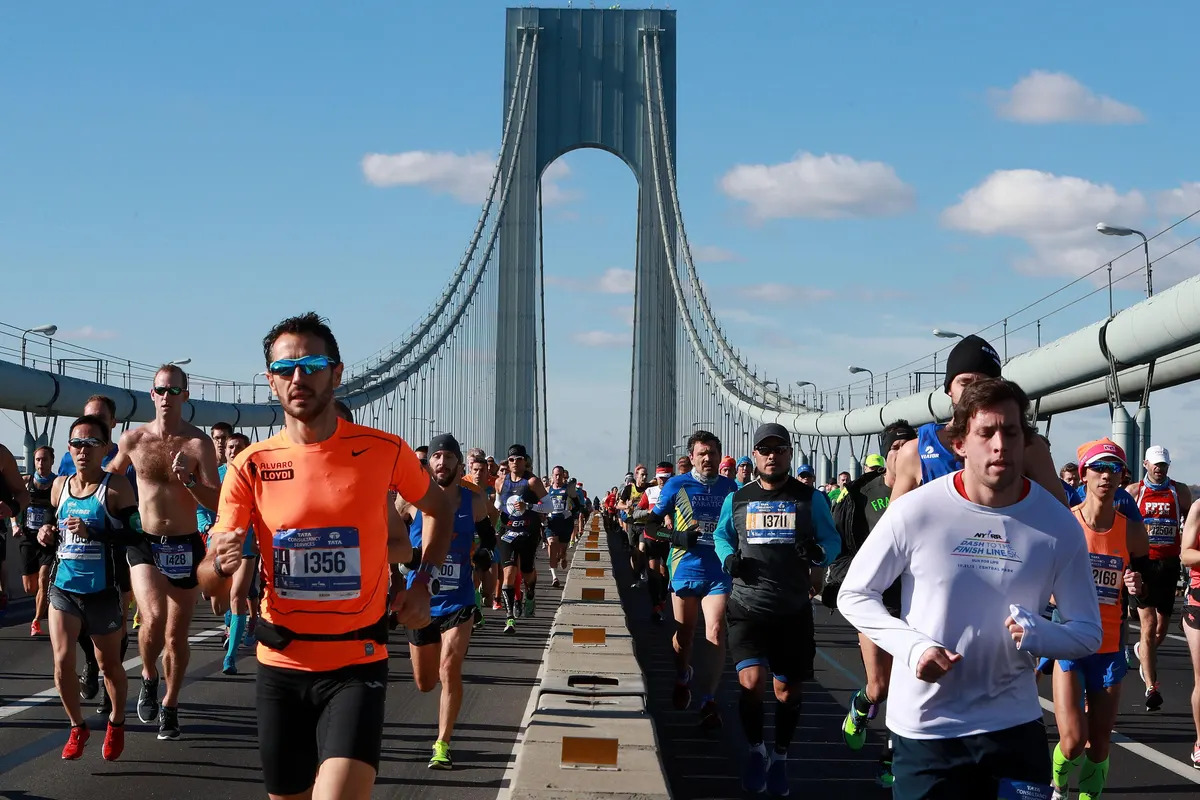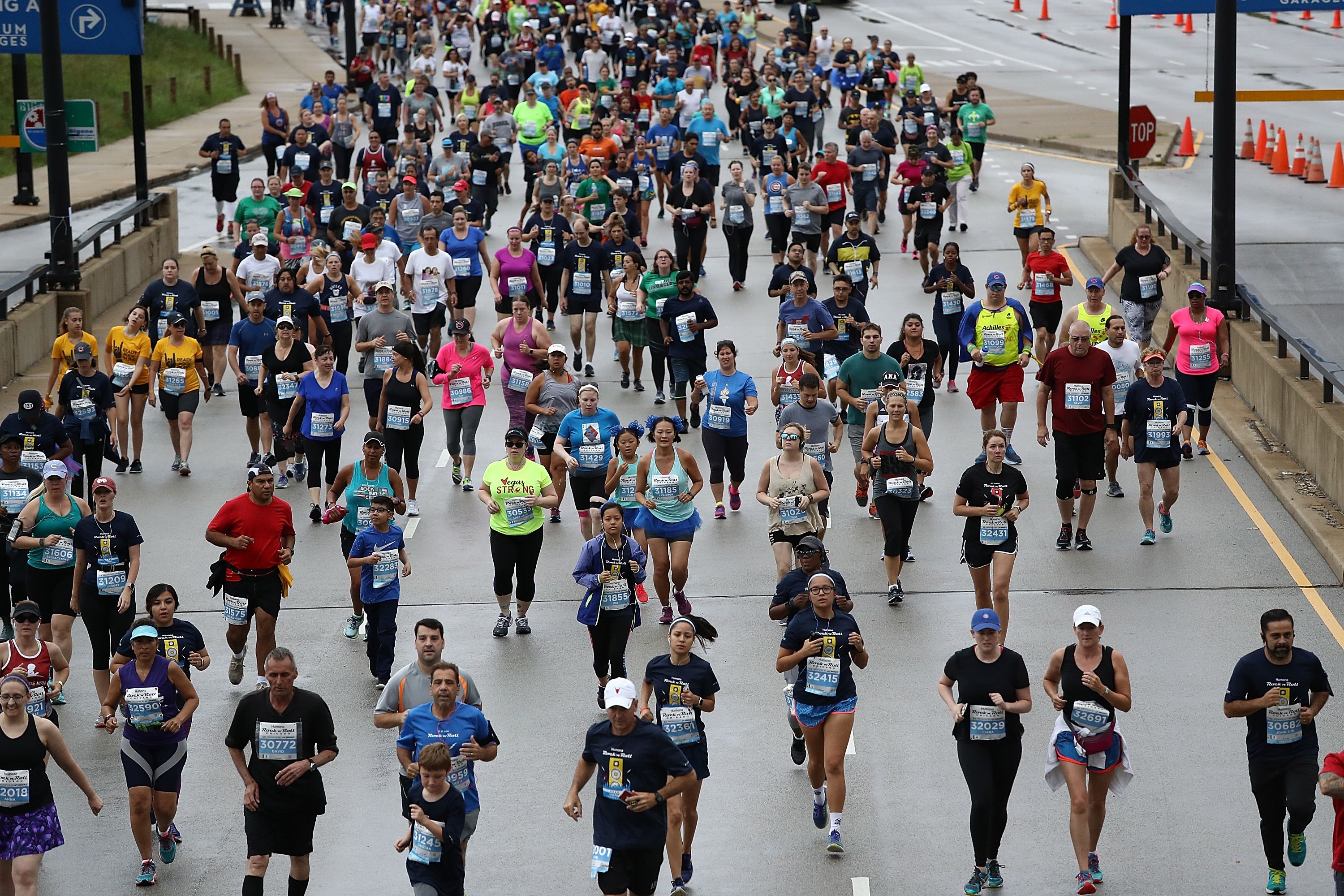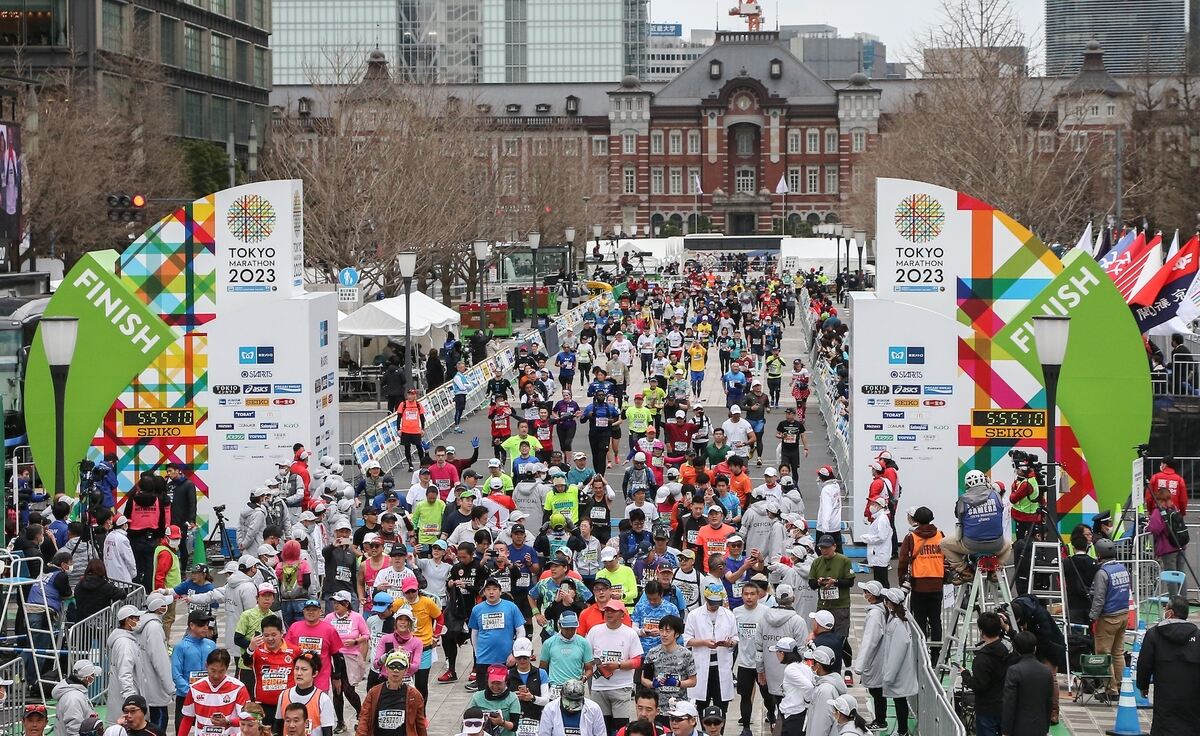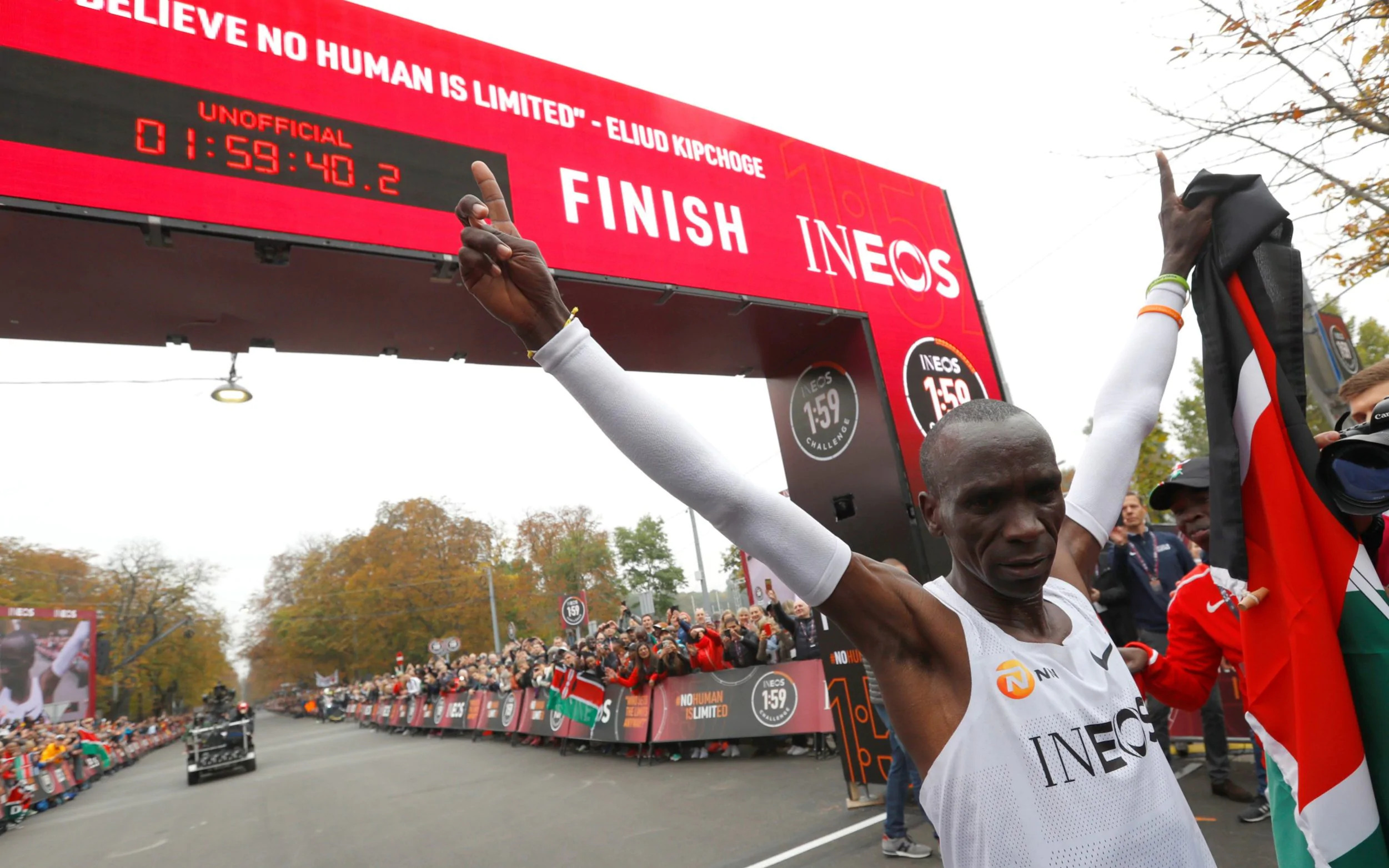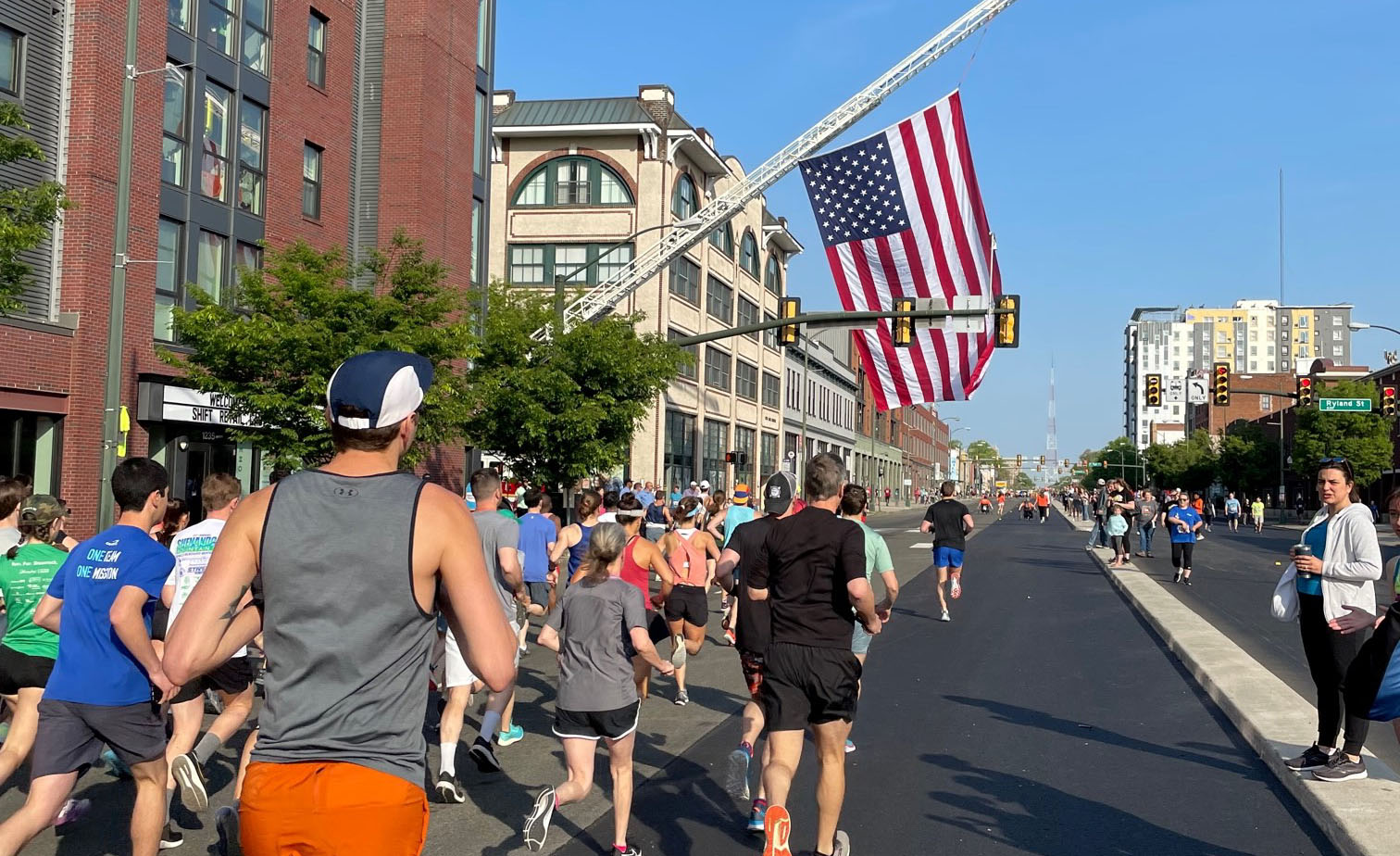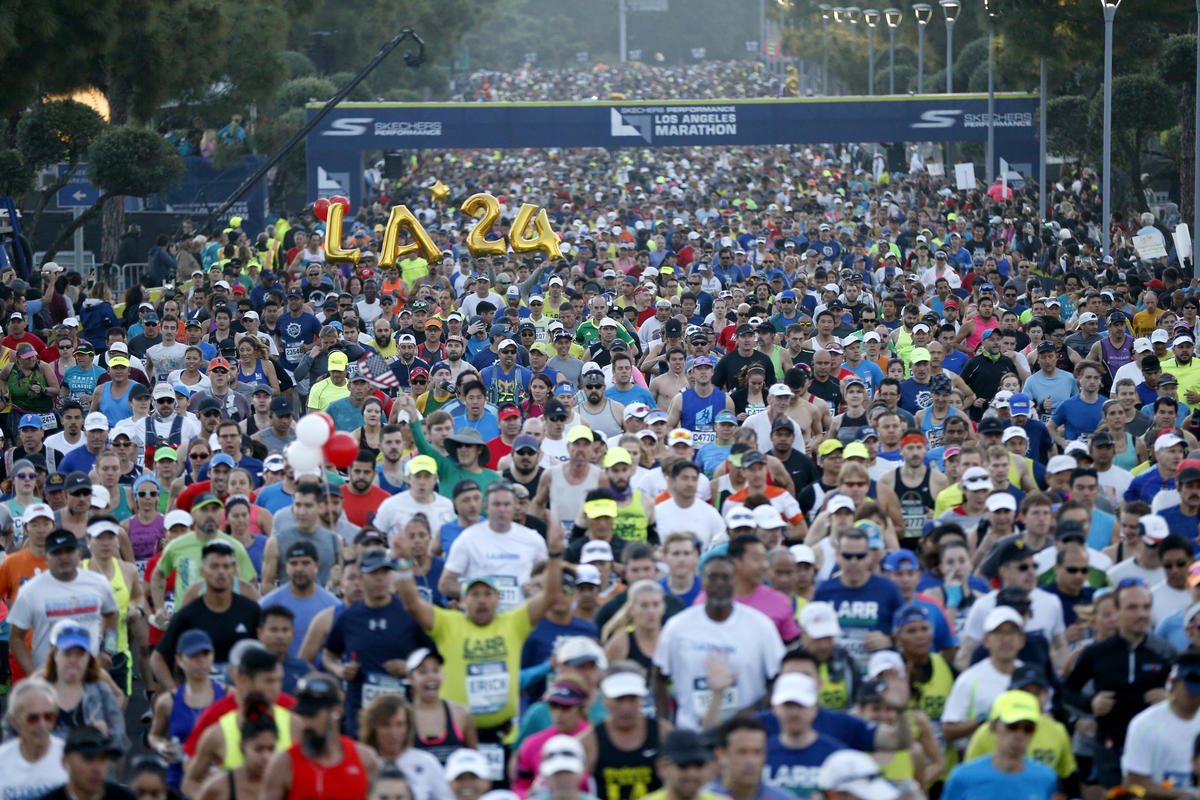

Featured
When Was The 2017 LA Marathon
Modified: January 22, 2024
Find out when the LA Marathon 2017 will take place and be part of the featured event that brings together athletes from all over.
Introduction
The LA Marathon, also known as the Los Angeles Marathon, is one of the most iconic and prestigious marathons in the United States. Held annually in the picturesque city of Los Angeles, this event attracts thousands of runners from all over the world. With its stunning route, diverse participant field, and vibrant atmosphere, the LA Marathon has become a must-do race for both seasoned marathoners and aspiring runners.
The LA Marathon was first launched in 1986 and has since grown in popularity and reputation. It is organized by the non-profit organization, Conqur Endurance Group, which also manages other notable endurance events in the Los Angeles area. The race has garnered a stellar reputation for its organization, support, and attention to detail, offering runners an unforgettable experience.
What sets the LA Marathon apart from other marathons is its unique and scenic course. Runners start at Dodger Stadium, home of the Los Angeles Dodgers baseball team, and make their way through iconic neighborhoods and landmarks. They traverse the stunning streets of downtown Los Angeles, soak in the beauty of Hollywood, and finish the race along the famous Santa Monica Boulevard, near the sparkling shores of the Pacific Ocean.
The LA Marathon is not only renowned for its breathtaking course, but also for its diverse participant field. It attracts elite athletes aiming for victory, recreational runners aiming for personal bests, first-time marathoners seeking a new challenge, and charity fundraisers determined to make a difference. It’s a celebration of athleticism, perseverance, and community spirit.
For those considering participating in the LA Marathon, it’s important to understand that it requires careful training and preparation. The marathon’s distance of 26.2 miles demands physical endurance and mental resilience. However, with the right training plan, support, and determination, crossing the finish line can be an incredibly rewarding achievement.
In the following sections, we will delve into the details of the LA Marathon, including the route, start time, registration process, training tips, race day recommendations, and post-race celebrations. Whether you’re a seasoned marathoner or a first-time participant, this comprehensive guide will help you navigate and make the most of this extraordinary event.
Route
The LA Marathon route is a spectacular journey that showcases the diverse beauty and vibrant energy of the city. Runners start at Dodger Stadium, which provides a thrilling and iconic atmosphere as they begin their 26.2-mile quest.
From Dodger Stadium, participants make their way through the streets of downtown Los Angeles, passing by iconic landmarks like City Hall and the Walt Disney Concert Hall. The downtown portion of the route offers a mix of cityscape and urban scenery, with cheering crowds lining the streets to motivate and inspire the runners.
As the race progresses, runners enter the lively and historic neighborhoods of Echo Park and Silver Lake, known for their vibrant art scenes and trendy shops. The route then takes participants through the historic Sunset Boulevard, offering panoramic views of the city and creating a memorable experience for both runners and spectators.
The next part of the route leads runners to Hollywood, where they pass by famous attractions such as the TCL Chinese Theatre and the Hollywood Walk of Fame. The atmosphere here is electric, with crowds of supporters and volunteers cheering on the runners, adding to the excitement and motivation.
After leaving Hollywood, runners enter the charming neighborhoods of West Hollywood and Beverly Hills. The palm-lined streets, luxury homes, and picturesque parks create a pleasant and scenic backdrop while providing a welcome respite for weary runners.
As the race nears its end, the route transitions to the iconic Santa Monica Boulevard, leading runners to the sparkling shores of the Pacific Ocean. The final stretch is lined with cheering spectators, offering encouragement and support, as participants summon their last reserve of energy to cross the finish line in Santa Monica.
The LA Marathon route showcases the best of Los Angeles, featuring a mix of cityscapes, cultural landmarks, and natural beauty. It allows runners to experience the diverse fabric of the city, from the bustling streets of downtown to the glamour of Hollywood and the serenity of the Pacific coastline.
Each mile of the route is marked, providing runners with a sense of progression and accomplishment as they tick off each mile. Aid stations are strategically placed along the course, offering hydration and fuel to help participants stay energized and hydrated throughout the race.
Whether it’s the sweeping views of the city, the cheers from the enthusiastic crowds, or the camaraderie among fellow runners, the LA Marathon route offers an unforgettable experience that showcases the rich tapestry of Los Angeles.
Start Time
The start time of the LA Marathon is an essential factor for participants to consider when planning their race day strategy. The race typically takes place in the early morning hours to provide cooler temperatures and minimize the impact of the sun’s heat.
Each year, the LA Marathon start time varies slightly to accommodate logistical requirements and ensure a smooth flow of runners. On average, the race is scheduled to begin between 6:30 am and 7:00 am. It is advisable for participants to arrive at least an hour before the designated start time to allow for check-in, gear drop-off, and pre-race preparations.
One of the advantages of an early morning start time is the opportunity to witness the sunrise during the race. As runners make their way through the course, they can experience the city awakening and the changing colors of the sky, creating a breathtaking backdrop for their journey.
The LA Marathon employs a wave start system, where runners are divided into different starting groups based on their expected finish times. This allows for a smoother flow of participants and reduces congestion on the course. The exact details and assignments for wave starts are communicated to runners prior to the race day.
It is crucial for participants to carefully review and understand their assigned start time and wave group to ensure they line up in the correct area at the start line. This helps to prevent any confusion or delays and allows for a more efficient and enjoyable race experience.
Additionally, participants should factor in the time required for warm-up exercises, stretching, and mental preparation before the start of the race. Many runners find it beneficial to arrive early to calm nerves, perform gentle warm-up routines, and mentally focus on their goals for the race ahead.
The LA Marathon start line is filled with anticipation, excitement, and nervous energy as runners prepare to embark on their marathon journey. It is a moment of camaraderie and shared determination as participants from different backgrounds and abilities come together to challenge themselves and achieve their personal goals.
By adhering to the designated start time, being aware of the wave start system, and allowing ample time for pre-race preparations, participants can ensure a smooth and successful start to their LA Marathon experience.
Registration
Participating in the LA Marathon requires registration, which typically opens several months before the race day. It is important to secure a spot early as the event often reaches its participant capacity quickly due to its popularity.
The registration process for the LA Marathon is straightforward and can be completed online through the official race website. Participants are required to provide personal information, such as name, address, email, and date of birth. They must also agree to the event’s terms and conditions before submitting their registration.
Upon completing the registration form, participants will be prompted to pay the registration fee. The fee varies depending on several factors, including registration timing and participant category. Early bird discounts are often available, encouraging early registration and providing financial incentives for participants.
It is important to note that the LA Marathon has a no-refund policy. Once registration is completed and payment is made, participants are committed to participating in the race. However, participants may have the option to transfer their registration to another runner if they are unable to participate due to unforeseen circumstances. Transfer deadlines and procedures will be communicated prior to the race.
In addition to the individual race registration, the LA Marathon also offers options for charity fundraising and team registration. Participants can choose to fundraise for a designated charity partner and obtain guaranteed entry to the race. This provides an opportunity to give back to the community while participating in the marathon.
For teams, there are options for corporate teams, running clubs, and charity teams. Team registration allows groups to compete together, foster a sense of camaraderie, and showcase their collective spirit on race day. It is advisable to review the specific requirements and procedures for team registration on the LA Marathon website.
Once registration is complete, participants will receive a confirmation email with important information, including their bib number and other race-related details. It is essential to keep this confirmation email as it will serve as a reference point for pre-race preparations and accessing necessary information in the lead-up to the event.
Registration for the LA Marathon typically closes a few weeks before the race day. It is recommended to register early to secure a spot and take advantage of any early bird discounts that may be available. By completing the registration process, participants take the first step towards realizing their goal of participating in this iconic marathon.
Training
Preparing for the LA Marathon requires a well-structured training plan that combines endurance, strength, and speed workouts. Adequate training is vital to prevent injuries, build stamina, and ensure a successful race day experience.
Beginners should start their training at least four to six months before the race. This allows ample time to gradually increase mileage, build endurance, and adapt to the demands of marathon running. Intermediate and advanced runners can start their training closer to the race day, typically three to four months prior.
A training plan for the LA Marathon should include a variety of workouts, including long runs, tempo runs, speed intervals, and recovery runs. The long run is an essential component where runners gradually increase their mileage each week to build endurance. It is advisable to dedicate one day per week for the long run, with the distance gradually increasing until reaching the desired marathon distance.
Tempo runs are shorter, faster-paced runs that aim to improve lactate threshold and simulate race pace. These workouts help runners become comfortable at a faster pace and improve their overall race performance. Speed intervals, which involve running at a faster pace for a specific duration, enhance cardiovascular capacity and improve running economy.
In addition to the running workouts, cross-training exercises such as cycling, swimming, or strength training can be included to improve overall fitness, build muscle strength, and prevent overuse injuries. Yoga or Pilates can also be beneficial for flexibility and core strength.
Listening to your body and allowing for rest and recovery is crucial during training. Incorporating rest days into the schedule helps prevent overtraining and decreases the risk of injuries. It is essential to pay attention to any signs of fatigue, pain, or excessive soreness, and adjust the training plan accordingly.
Nutrition and hydration are key components of marathon training. Ensuring a well-balanced diet that includes a mix of carbohydrates, proteins, and healthy fats provides the necessary fuel for long runs and aids in recovery. Hydration should also be a priority, with runners drinking water before, during, and after their workouts.
To enhance training, it can be beneficial to participate in shorter races or organized training runs leading up to the LA Marathon. These events provide opportunities to practice race-day strategies, get a feel for the race atmosphere, and build confidence before the big day.
Lastly, mental preparation is just as important as physical training. Visualizing crossing the finish line, setting achievable goals, and maintaining a positive mindset during training helps participants stay motivated and committed to their training plan.
Training for the LA Marathon requires dedication, consistency, and a gradual progression of mileage and intensity. By following a well-designed training plan, incorporating cross-training and rest days, paying attention to nutrition and hydration, and maintaining a positive mindset, participants will be well-equipped to tackle the LA Marathon challenge and have a memorable race day experience.
Race Day Tips
On the day of the LA Marathon, proper preparation and execution are essential for a successful and enjoyable race experience. Here are some key tips to keep in mind:
1. Get a good night’s sleep: Aim for seven to eight hours of quality sleep the night before the race. This will ensure that you are well-rested and ready to tackle the marathon distance.
2. Eat a balanced breakfast: Fuel your body with a breakfast that includes a mix of carbohydrates for energy, protein for muscle repair, and healthy fats for sustained fuel. Avoid trying any new foods that you haven’t tested during your training.
3. Arrive early: Give yourself ample time to arrive at the starting area, check-in, and navigate through any necessary pre-race procedures. This will help alleviate any stress or last-minute rush.
4. Warm up properly: Perform a dynamic warm-up routine to activate your muscles and prepare your body for the race. This can include gentle jogging, high knees, walking lunges, and leg swings. Avoid static stretching before the race.
5. Stick to your race pace: During the race, it’s easy to get caught up in the excitement and start too fast. Stick to your planned race pace and avoid going out too quickly, as this can deplete your energy reserves and lead to burnout later on.
6. Stay hydrated: Take advantage of the hydration stations along the course. Sip water or electrolyte sports drinks at regular intervals to replenish fluids and prevent dehydration. Avoid overhydrating, as it can lead to discomfort or gastrointestinal issues.
7. Pace yourself on hills: The LA Marathon route includes some challenging hills. Pace yourself accordingly and use proper hill running techniques, such as maintaining an even effort and shortening your stride on the uphill sections.
8. Listen to your body: Pay attention to any signs of fatigue, discomfort, or pain during the race. Adjust your pace or take short walking breaks if needed. Remember that it’s a marathon, not a sprint, and conserving energy is crucial for the entire distance.
9. Use fuel strategically: Practice your fueling strategy in training and use it during the race. Whether it’s energy gels, chews, or real food, consume these fueling items at regular intervals to provide your body with the necessary energy to sustain the marathon distance.
10. Enjoy the experience: Remember to soak in the atmosphere, appreciate the support of the volunteers and spectators, and celebrate your achievement throughout the race. Take in the iconic sights of Los Angeles and enjoy the journey to the finish line.
Following these race day tips will set you up for a successful and memorable LA Marathon experience. Trust in your training, stay positive, and embrace the challenge of the marathon distance. Remember that every step brings you closer to achieving your goal of crossing the finish line.
Post-Race Celebrations
Finishing the LA Marathon is a tremendous accomplishment, and it’s time to celebrate your achievement! Here are some post-race celebrations to consider:
1. Take a moment to reflect: After crossing the finish line, take a moment to soak in the accomplishment. Reflect on the months of training, the challenges you overcame, and the hard work that went into completing the marathon.
2. Collect your medal and finisher’s shirt: Head to the designated area to collect your well-deserved LA Marathon finisher’s medal and commemorative shirt. These items serve as lasting reminders of your accomplishment.
3. Rehydrate and refuel: After the race, it’s important to replenish lost fluids and replenish your energy levels. Grab a bottle of water or electrolyte sports drink and refuel with a nutritious snack or meal.
4. Join in the post-race festivities: The LA Marathon often hosts a post-race celebration where participants can unwind, enjoy live music, and share stories with fellow runners. Take advantage of this opportunity to relax, mingle, and celebrate with the running community.
5. Connect with family and friends: Locate your loved ones who supported you throughout your training and invite them to join you in the post-race celebration. Reconnect, thank them for their support, and let them share in your joy and accomplishment.
6. Treat yourself: Consider rewarding yourself with a well-deserved treat or indulgence. Whether it’s a massage, a special meal, or a relaxing day spa, acknowledge your hard work and dedication by pampering yourself.
7. Reflect on lessons learned: Take a moment to reflect on your marathon experience. Consider what went well, areas for improvement, and lessons learned. These insights can guide your future training and help you set goals for future races.
8. Share your race experience: Share your LA Marathon experience on social media or with friends and family. Post pictures, write a race recap, or simply express your feelings about the accomplishment. Your story may inspire others to take on their own running challenge.
9. Set new goals: Now that you’ve conquered the LA Marathon, it’s time to set new goals. Whether it’s improving your marathon time, tackling a different distance, or exploring other races, use the momentum from your accomplishment to fuel your next running endeavor.
10. Celebrate your journey: Remember to celebrate not only the race day achievement but also the entire journey you’ve embarked on. The LA Marathon is more than just one day—it represents weeks and months of hard work, dedication, and perseverance. Be proud of everything you’ve accomplished.
Post-race celebrations are an integral part of the marathon experience. Embrace the joy, recognize your achievement, and savor the memories you’ve created along the way. The LA Marathon is more than just a race—it’s an unforgettable celebration of strength, determination, and triumph.
Conclusion
The LA Marathon is an iconic event that captivates runners from around the world. With its breathtaking route, diverse participant field, and vibrant atmosphere, it offers a unique and unforgettable experience for runners of all abilities. From the start at Dodger Stadium to the finish along Santa Monica Boulevard, the marathon showcases the beauty and energy of Los Angeles.
Participating in the LA Marathon requires careful preparation and training. It is important to follow a well-designed training plan, incorporating long runs, speed workouts, and cross-training to build endurance and prevent injuries. Taking care of nutrition, hydration, and mental preparation is crucial to ensure race day success.
The LA Marathon is not just about the race itself; it’s a celebration of personal achievements, community spirit, and the shared love of running. The event brings together elite athletes, recreational runners, first-time marathoners, and charity fundraisers, creating a diverse and lively atmosphere.
As runners cross the finish line, the post-race celebrations serve as a moment of reflection, reward, and connection. It is an opportunity to share stories, thank supporters, and honor the hard work that went into completing the marathon.
Whether you’re aiming for a personal best, fundraising for a cause, or simply looking to challenge yourself, the LA Marathon provides an unrivaled experience. From the excitement at the start line to the exhilaration of crossing the finish line, it’s a journey filled with determination, perseverance, and unforgettable memories.
The LA Marathon is not just a race—it’s an extraordinary event that showcases the best of Los Angeles, celebrates the spirit of running, and rewards participants with a sense of accomplishment that extends far beyond race day. As you prepare for the LA Marathon, embrace the training, enjoy the journey, and savor every step as you become part of the incredible legacy of this renowned marathon.
